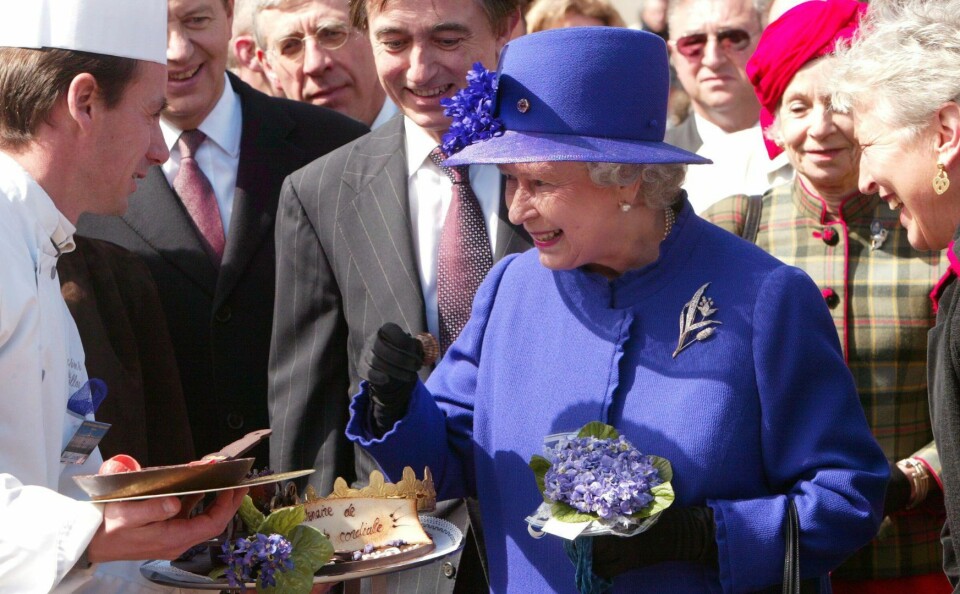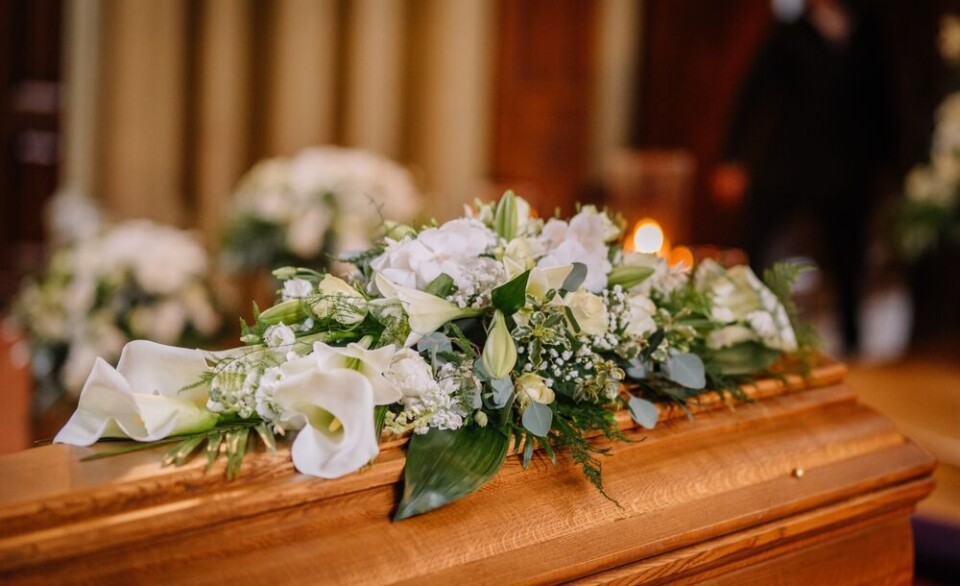-
‘Trustworthy’ media label idea from Macron causes political storm in France
Comments prompted fierce political backlash from right but government insists it was taken out of context
-
French prime minister faces fresh problems to pass a 2026 budget
MPs continue to argue over budget but alternative measures could possibly see government toppled
-
56 skiers stuck on chair lift for over an hour in French Alps
More than a dozen were rescued by helicopter before lift began working
Platinum Jubilee: how France fell in love with the Queen
And the feeling is mutual - Simon Heffer reflects on the leading role France has played in her 70 years of service

Like most well-bred women of her generation, Queen Elizabeth II was taught French almost from the moment she had grasped English but, astonishingly, her 1930s childhood did not include any visits to France.
They were precluded by her parents’ love of the Scottish and English countryside, and the Duke of York’s (as her father was until he became George VI in 1936) determination to cling to his father’s routine of wintering in Norfolk for the shooting, late summer and autumn in Balmoral, and much of the rest of the time in London or at Windsor.
Parisian crowds loved Princess Elizabeth
Then the war intervened, and it was not until May 1948 that the 22-year-old Princess Elizabeth and the Duke of Edinburgh (whom she had married the previous November) visited France for the first time.
Indeed, it was the first time she had ever left the United Kingdom. She was three months pregnant with Prince Charles.
Paris was the inevitable destination for this inaugural visit by the woman now assumed (for it was unlikely her mother, then 47, would be giving birth to a son who would become heir apparent) to be the next British monarch.
The Royal Couple stayed for four days, which included a reception at the Elysée with President Auriol.
Since then, the Queen has met every president of the Fourth and Fifth Republics, but the Princess made a huge and positive impression on the Parisian crowds.
Read more: From Auriol to Macron: 10 French presidents of Queen’s 70-year reign
Speech in French
She attended an exhibition of eight centuries of British life in France, from the days when much of it had an English king as its head of state to the entente cordiale and the alliances in two world wars.
She opened the exhibition with a speech delivered with ease in French: part was captured on newsreel and can be seen and heard on YouTube, revealing that the heir apparent’s French accent perhaps left a little to be desired.
Shared passion for horses
Her hosts laid on some fabulous entertainment, notably a gala night at the Opéra Garnier, but also a trip to a nightclub during which Edith Piaf sang La Vie en Rose to the young couple.
She also asked to visit the flower market on the Ile de la Cité.
However, the highlight of the trip from the Princess’s point of view was Longchamp for the racing: her visit was timed to coincide with the spring meeting there.
This set a pattern for so many of the Queen’s trips to France.
The seriousness with which the French treat racing and bloodstock could not but fascinate a woman for whom horses are just about the most important interest in her life.
A republic that loves the Queen
The Queen has returned to France many times since, including five state visits.
The first was in 1957, in the twilight of the Fourth Republic and as fences were being mended after the Suez farrago of the previous year.
Later ones were in 1972 (shortly before the United Kingdom joined what would become the EU), 1992 (the year Her Majesty, for unrelated reasons, called her ‘annus horribilis’), 2004 (for the centenary of the entente cordiale) and 2014, to mark the 70th anniversary of D-Day.
On that last state visit, she revisited the flower market (re-named, in her honour, Marché aux Fleurs Reine Elizabeth II) to cries of Vive la reine! – an unusual sentiment in a republic, but evidence of how many people in France have taken the British head of state to their hearts, not least because they recognise how much she loves their country.
Wartime bonds and commemoration
The legacy of the war has also brought the Queen to France on several occasions, such as when visiting the Normandy D-Day landing beaches at the 40th anniversary commemorations in 1984, and the 50th in 1994.
She also took part in a commemoration at the Arc de Triomphe of the 80th anniversary of the Armistice in 1998, and unveiled a statue of Winston Churchill – whose own difficult wartime relations with Charles de Gaulle appeared to have been forgotten.
She was in Normandy, too, in 1967 – this time to tour the stud farms and stay at Château de Sassy near Alençon.
Queen feels comfortable in France
One reason it is unclear exactly how often Her Majesty has been to France is that it is thought there have been several private visits to look at horses with a view to adding them to her stable, or simply going off in an understated and private fashion to the races.
Not least for that reason, and because she has spoken of how beautiful France is, it has become the country she has visited most during her reign outside the Commonwealth, and one in which she clearly feels exceptionally comfortable.
Love of French heritage and history
The Queen is familiar with other parts of France. On the last leg of her 1957 visit, she went to Lille to lay a wreath on a war memorial, and to Roubaix to visit textile factories.
She loves Versailles, where she has been several times, and went to Provence during the 1972 state visit.
The heritage of France has always interested her.
In Provence, she was keen to see the architectural treasures of Nîmes and Avignon, and in 1979 she flew to Tours to visit two of the finest Loire chateaux – Chenonceau and Chambord – and then went to Burgundy to see the Hospices de Beaune and the cathedral at Vézelay.
She liked the Loire so much that she returned on her 1992 state visit and visited Blois, and then went on to Bordeaux, whose links with England go back to the days of Eleanor of Aquitaine and beyond.
There is no doubt the Queen has a clear conception of the shared history of the two peoples, which made it only fitting that she and President Mitterrand should have opened the Channel Tunnel two years later.
European family?
The Queen never reveals her politics, but in 1992 she addressed the European parliament at Strasbourg and spoke of the ‘European family’.
She was alleged, a quarter of a century later, to have expressed anti-EU sentiments at a private lunch with politicians at Buckingham Palace.
If so, it only proves that no one is safe from the sentiment of going off his or her family.
Platinum jubilee coverage expected in France
In 2012, the Diamond Jubilee was extensively covered in France, and there is little doubt that this one will be too.
Over the years, French commentators have echoed British admirers in identifying that in a changing world of shifting values (and ‘here today, gone tomorrow’ politicians) she is a constant presence – even in the minds of those who owe her no allegiance.
As with the Americans, who routinely call her ‘the Queen’ as if she is theirs and there is no other, she has become a safe haven for republicans who like to bask in history, pomp and circumstance.
Perhaps it will set the French thinking again as they debate whether to start a Sixth Republic.
After all, not only do they have Bourbons, Orléanists and Bonapartists to choose from, but our own Queen – descended as she is from George II’s Huguenot maternal grandmother, Eléonore Desmier d’Olbreuse – could be rather a good candidate too.
Related articles
Queen’s jubilee: Red Arrows to join French navy planes at Le Touquet
Schadenfreude, secret envy: Why do the French love the British royals?
























